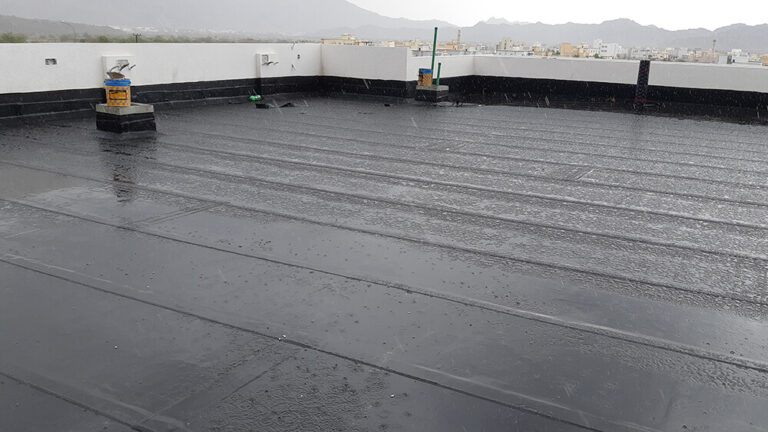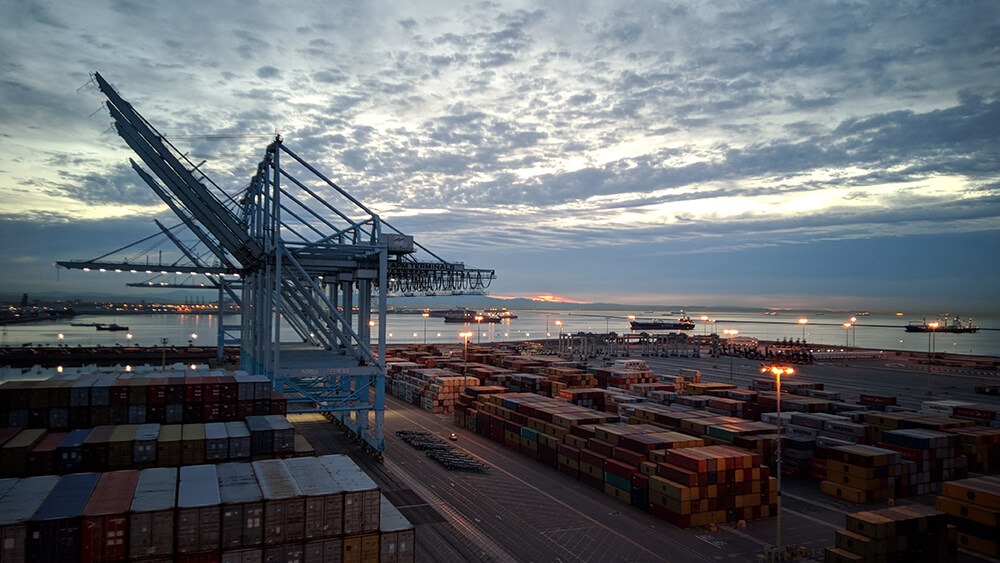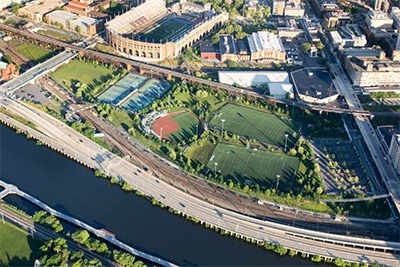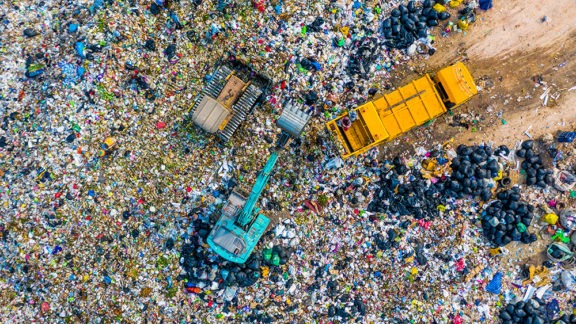The U.S. Environmental Protection Agency (EPA) Region 9 and the Los Angeles Regional Water Quality Control Board (RWQCB) have released a draft of regulatory requirements aimed at reducing pollutants in Los Angeles–area stormwater runoff. When adopted — expected in fall 2024 — these requirements will impact many previously unregulated commercial, industrial, and institutional (CII) facilities in the area, potentially requiring significant spending and changes to stormwater runoff management.
The EPA shared a draft Residual Designation Memo that defines which CII facilities would be required to seek coverage under the new draft permit. As we discussed in a previous article, the permit will apply to certain CII properties located in the Dominguez Channel/Greater Los Angeles and Long Beach Harbor Watershed and the Los Cerritos Channel/Alamitos Bay Watershed. Affected property owners, operators, and others should review the drafts.
And it’s not just facility owners and operators in those LA-area watersheds who should pay attention. Similar requirements are likely to follow for the entire state, although in September 2022, Gov. Gavin Newsom rejected a bill (California Assembly Bill AB-2106) that would have required the California State Water Resources Control Board to establish a statewide CII permit. In his letter accompanying the rejection, Newsom cited budget and strategy-alignment concerns with the bill but expressed support for efforts to improve stormwater permitting and reporting.
Stormwater dischargers in other states should also take notice. In September, for example, the EPA announced that it would exercise its residual designation authority in Massachusetts to manage currently unregulated stormwater pollution in three Boston-area watersheds, which will require the implementation of a new CII permit.
Many privately owned, currently unpermitted CII properties will require new permit coverage
In the two Los Angeles watersheds, the EPA has identified approximately 640 parcels that will be impacted, essentially defined as privately owned, currently unpermitted CII parcels with five or more acres of impervious surface (e.g., streets, parking lots, rooftops, and sidewalks). The designation applies not only to individual five-or-more-acre facilities, but also to parcels that are part of larger facilities already subject to the California Statewide General Permit for Stormwater Discharges Associated with Industrial Activities (IGP), and to parcels that are part of a facility that has submitted a No Exposure Certification (NEC) or notice of non-applicability (NONA) under the IGP if those parcels are not covered by the NEC or NONA criteria.

Permittees will have three options for compliance
In the draft of the new CII permit plan, the RWQCB lays out three paths toward compliance:
- Manage stormwater runoff offsite by joining the local watershed’s group management plan and contributing funding toward an approved project. The RWQCB has designated this as the preferred compliance option; an RWQCB representative stated in an August 30 staff workshop that it offers “regulatory certainty” for permittees and can facilitate large-scale uses of stormwater runoff that contribute to the sustainability of the local water supply.
- Manage stormwater runoff on-site with a site-specific treatment solution. This option will likely prove costly and difficult for many facilities, given the need for adequate space, permeable soils, and other site-specific conditions.
- Demonstrate on-site compliance with water-quality-based effluent limitations, which requires a site-specific monitoring and reporting plan. That plan must detail discharge locations and pollutants at the site and requires regular sampling and reporting — also likely difficult and time-consuming for most facilities.
Questions linger on key issues
Both the EPA Residual Designation Memo and the draft CII permit leave ambiguities and invite questions on critical aspects of the new permit, including the following:
- Lack of clarity on the legally responsible party. The RWQCB draft defines the party responsible as the “discharger,” but does not state whether that is the site’s owner or lessee (in contrast with, e.g., the IGP, which identifies a site’s “operator” as the legally responsible party). When a participant asked about owner versus operator responsibility in the August workshop, an RWQCB spokesperson stated that the permittee is the party “that has responsibility and control over the runoff that leaves the site, so it could be either, or, or both in the draft permit.”
The issue becomes particularly murky for an entity like a port, which is a public agency as well as a site owner. However, a port is not a privately owned facility, which would imply it is not responsible under the new CII permit.
- Inconsistencies with the IGP. Some affected parcels will be part of facilities otherwise covered by the IGP, or Industrial General Permit (a statewide permit that applies to specific categories of activities, in contrast to this new, local permit designed to cover areas not covered by the IGP). Therefore, the responsible party might have to abide by two sets of permitting guidelines, making consistency between the two programs paramount. Currently, the minimum best management practices conflict, as does the approach to compliance — unlike the draft CII permit, the IGP allows for an iterative approach in which the discharger can first establish baseline conditions, and then identify pollution hotspots and target those for mitigation.
- Lack of measurable criteria for determining compliance. As the draft CII permit currently reads, the criteria for achieving compliance under options 1 and 2 lack clarity. Compliance option 3 ties compliance to effluent limits, but the other two options offer no such standard.
With option 1 as the regulators’ preferred compliance choice, it deserves particular attention. A number of aspects of this option remain unclear — for example, if a discharger joins a watershed management group, does the mitigation credit it receives attach to the parcel itself, or to the operator or owner? And sites vary in how much benefit they can provide for watershed management — will they receive different credit accordingly, or will their required financial contributions vary?
Option 1 also currently only allows for agreements with local watershed groups for regional projects. As is currently allowed under the IGP, agreements should be allowed with dischargers for offsite projects, separate from watershed groups, to give flexibility and a wider range of options for collaboration.

Timeline: expected adoption and compliance schedule
The comment period closed on October 24, and final versions of the Residual Designation Memo and the CII permit are expected by end of 2022. If the compliance deadlines remain as drafted, the following will apply:
- Existing dischargers not covered by the IGP who are applying for coverage under the new CII permit must submit a notice of intent (NOI) within one year and permit registration documents within two years of the effective date.
- Existing dischargers covered under the IGP who are applying for coverage under this order as an alternative must submit both an NOI and permit registration documents within one year of the effective date.
- New dischargers applying for coverage under this order must submit an NOI and permit registration documents at least 45 days prior to the commencement of the authorized discharge.
As facilities in the affected watersheds begin to plan for these deadlines, we can advise on the draft language and compliance options.
We also encourage dischargers outside of those watersheds to watch developments related to this permit — as the Massachusetts example shows, similar regulatory requirements are likely elsewhere in the country.
Read our previous article on the CII permit.
Published: 11/3/2022
- Aerospace
- Education, healthcare, and cultural institutions
- Healthcare
- Higher education
- K-12 and independent schools
- Industrial and manufacturing
- Automotive
- Consumer products
- Food and beverage
- Ports, harbors, and coastal Infrastructure
- Transportation
- Manufacturing
- Water resources
- Stormwater
Authors

Technical Expert, Water Resources




